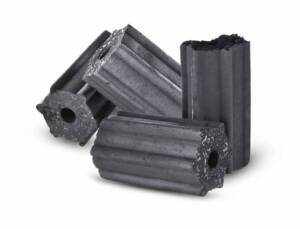Project Report For Fuel Briquetting
Introduction
Project report for fuel briquetting is as follows.
Briquetting is the process of compressing material into a solid product with a higher bulk density, reduced moisture content, and uniform size, shape, and material qualities that allow it to be used as a fuel, similar to wood or charcoal. Briquetting is also used to prepare metallurgical coke fines for use in steel foundries.
Fuel briquettes are created from low-cost coal fines and Agri waste solid waste materials for use in the home or restaurant industries, which rely heavily on such solid fuel sources. Fuel briquettes can be created with the use of technology to produce smokeless fuels with little atmospheric pollution. However, a cost-benefit analysis is required for this product at the chosen site.

One of the key difficulties of Solid Waste Management, namely Municipal Solid Waste, in developing nations is to reform the informal sector in order to enhance livelihoods, working conditions, and efficiency in recycling materials found in the waste stream. Organizing and educating informal recyclers to become micro and small businesses is a very successful strategy to improve their ability to add value to waste materials gathered. It is advised that agro waste and municipal solid waste be considered for fuel briquette.
Product & Application of Fuel Briquetting
Municipal Solid Waste is a low-quality fuel that must be pre-processed to improve consistency, storage, and handling features, combustion behavior, and calorific value. Raw MSW has a calorific value of roughly 1000 kcal/kg, whereas fuel pellets have a calorific value of 4000 kcal/kg. After treating 100 tonnes of raw waste, around 15-20 tonnes of fuel pellets can be produced.
Pelletization can be a particularly efficient method for preparing an enriched fuel feed for other thermochemical processes other than incineration, such as pyrolysis/gasification because it enriches the organic content of waste by eliminating inorganic materials and moisture. Farm waste that has been carbonized and cheap fine coal from the market can be mixed with solid waste to improve the characteristics.
The socialized Pellets can be utilized to produce power as well as to heat plant boilers. For home and industrial uses, they can also serve as a good substitute for wood and coal. RDF has significant uses in the following fields:
Ceramic/cement kilns
Industrial steam/heat boilers and power plants
Restaurants using pellet stoves or homes in remote areas.
Project Report Sample On
Fuel Briquetting
Get Completely Custom Bankable Project Report
Row Material of Fuel Briquetting
The primary input materials are coal fines, agricultural waste, waste oil, and—most significantly—municipal solid waste. Additionally needed are binders such as molasses, waste oil, and sodium silicate. It is assumed that the municipal solid waste will be provided without charge or that Amy will compensate the unit for the disposal and segregation of garbage. While other wastes, such as agricultural waste and used coal and oil, will be inexpensive.
Market Potential of Fuel Briquetting
Briquettes are expected to have a market worth US$2,273.8 million in 2022. From 2022 to 2032, the market is projected to increase at a CAGR of 4.2%, generating US$ 3,431.2 Million.
Expenses

Product Cost Breakup

Reveneue Vs Expenses

Market Trend

In India, the coal fines briquette business is the only type of fuel briquette used. Briquettes are produced by a number of small and medium-sized businesses.
In order to provide waste to energy services, large players in the public sector are looking at sewage and municipal solid waste in collaboration with numerous medium- and small-sized businesses in the private sector located all around industrial and urban centers in India. In 1999, SELCO International Limited, SELCO, installed 6.6 MW and set up India’s first commercial Municipal Solid Waste-processing unit using RDF pellets as the energy source.
A brand-new method for recycling garbage that produces non-toxic synthetic gas and other useful byproducts from wastes is known as plasma thermal destruction recovery technology. It is regarded as a tried-and-true, affordable, environmentally safe, and economically practical waste cleanup option.
